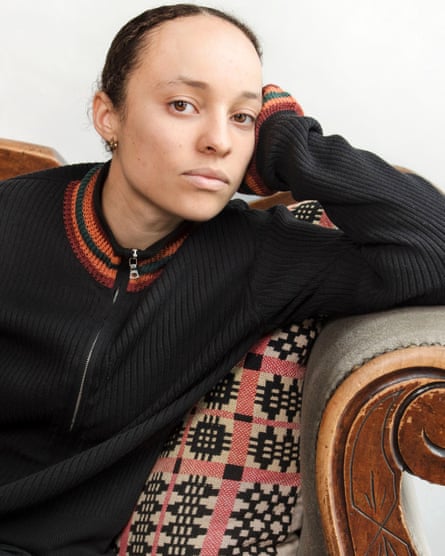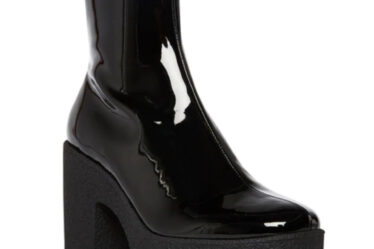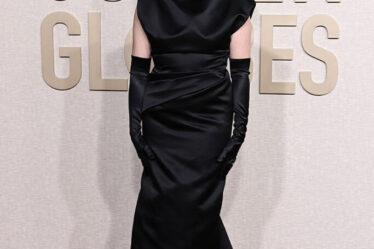
When Sarah Burton announced she was stepping down as creative director of Alexander McQueen this year, she left big shoes to fill. Burton, who designed the Princess of Wales’s wedding dress, had led the brand for 13 years, making it one of the most popular British fashion houses. When Seán McGirr was announced as her replacement in October, though his talent was never in question, his appointment meant that all the creative directors at Kering – the group that owns McQueen – were now white men.
Following McGirr’s appointment a picture – or grid of pictures – started doing the rounds in fashion circles, showing the faces of the six men who worked at Kering, which also owns Gucci, Saint Laurent and Balenciaga. With it came a conversation about who gets to ascend to the top jobs – the creative directorships of the big houses. These are the most visible roles, the public-facing side of an industry full of faceless cogs.
Two other fashion brands – Blumarine and Moschino – also employed new creative directors this autumn. Both were white men. By the time the shortlist for Designer of the Year at Monday night’s Fashion Awards was announced in November, it felt like the fashion quotient for white men had surely been filled. But – though the list does feature two women – four of the six are men, and all the nominees are white.
Looking at the winners over the past 10 years, it’s easy to see an uncomfortable precedent. Though women have been recognised with various awards – and the prize categories differ slightly from year to year – the last time a woman was awarded Designer of the Year was 2012, when Stella McCartney won. All the most recent recipients have been white men.
This is an industrywide problem. Of the top 30 luxury brands in the Vogue Business Index, eight out of 33 creative director roles are currently held by women – and only one, Sandra Choi of Jimmy Choo, is a woman of colour. There are two non-white men in creative director roles: Pharrell Williams at Louis Vuitton menswear and Maximilian Davis at Ferragamo. Olivier Rousteing at Balmain is the only other man of colour at one of the major fashion houses.
Fashion and identity commentator Caryn Franklin is at pains to point out that all these men are talented. “All of the leaders justify that it’s on a merit basis only – what they don’t recognise is that it’s so much harder for other minoritised creatives to get to that place where it’s merit-based only.”
The diversity problem does seem to be getting worse in fashion – recent analysis showed that the proportion of female creative directors is lower now than it was 15 years ago.
“Misogyny is rife in this industry,” says Jeanie Annan-Lewin, creative director of Perfect magazine. “We’re marketing clothes to women but they normally all come through the male gaze.”
According to a 2022 report on diversity by the British Fashion Council, despite women making up the majority of customers, most senior roles in fashion are held by men. The percentage of women on executive committees hovering at about 40%. The picture when it came to ethnic diversity was bleaker, with only around 10% of boards made up of people from ethnic minority backgrounds.
When big jobs at luxury houses come up, the role of a “responsible executive search consultant” would be to build a “balanced shortlist”, says Moira Benigson, founder of The MBS Group. But chief executives are largely in charge of appointing creative directors, and chief executives are largely white men. “Ultimately this is about those in charge favouring people who look just like them,” says Franklin.
The problem begins, she says, in college: “Fashion education in the past has been very euro-centric.” Students of colour have reported being “afraid to bring in references from their own cultural heritage”, getting a “sense from tutors that it wasn’t proper fashion”.
The archetype of the male genius plays a role, thinks Natassa Stamouli, online editor at 1 granary magazine, a fashion education platform and creative network which has led this discussion. “The industry doesn’t adequately support women, people of colour, or anyone who doesn’t fit the mould.”
Olya Kuryshchuk, founder and editor-in-chief of 1 Granary, also highlights “the clash between parenthood and the industry… Work culture in fashion studios is shaped by a lifestyle that excludes people who have responsibilities outside work.”
When she was creative director of Chloé, Phoebe Philo famously became the first designer at such a high level to take maternity leave in 2005. But not everyone has the clout of Philo, and few, if any, women would be able to take time out and be sure there would still be a career waiting for them.
after newsletter promotion
For Andrew Ibi, one of the curators of The Missing Thread: Untold Stories of Black British Fashion, an exhibition at Somerset House, London, and a co-founder of the Black Orientated Legacy Development (Bold) agency, fashion has also historically fallen prey to the perverse idea that “if there’s one black designer, we don’t need another one”.
There clearly are many talented designers from minority backgrounds. The shortlist for the “new establishment” category at the 2023 Fashion Awards includes Nicholas Daley, Saul Nash and Supriya Lele.
Ibi also points to designer Grace Wales Bonner who is yet to land a top job. “Her approach to culture, luxury, her understanding, her intellectual capacity – she should definitely be a creative director somewhere.”
Franklin similarly questions why British designer Martine Rose has not been recruited to a major fashion house. Employers, she says, “are really missing some magic when they settle for the same identity every time”.
So how might the industry evolve? Annan-Lewin thinks change must starts with education. “You’ve got whole fashion colleges and there’s not a single black teacher or person of colour there. You can’t be what you can’t see.”
Franklin refers to a study on racism which pointed to the importance of educating more privileged students to understand that they can be part of the solution: “Instead of opting to start a creative project in a team with everyone that looks like them, speaks like them, thinks like them … they are accountable for choosing team members to feel that stretch.”
Perhaps part of the solution is reframing the question. Instead of asking why more women and people of colour aren’t getting the top jobs at the luxury houses, maybe the real solution – or part of it – is to support them in their own endeavours.
For this to work, though, Annan-Lewin believes that designers need to be properly nurtured and “taught how to be businesses rather than just have amazing viral moments”. As it stands, she thinks, that we ”pick them up, give them loads of hype, and two years down the line nobody knows what happened to them”.



